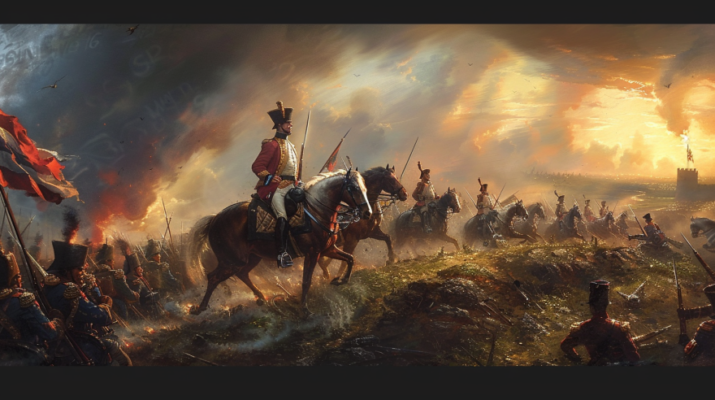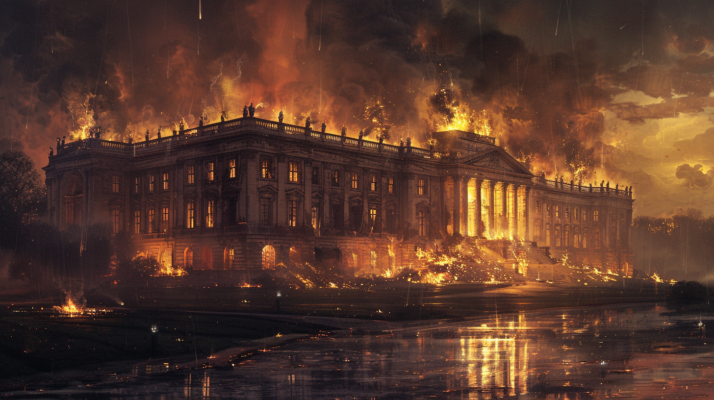1. Canada’s Big Bicentennial.
The bicentennial of the War of 1812 is a significant event in Canada, reflecting a deep national pride. The Canadian government invested nearly $30 million in commemorative events, including the dedication of a new national war monument. This war is seen as a key moment in Canadian history, forging a national identity as Canadians united to repel American invasions. In contrast, the War of 1812 is often overlooked in the United States, overshadowed by the American Revolution and the Civil War, with an ambivalent Congress declining to even create a national bicentennial commission.
2. Liberators? Think Again.
American leaders, including former President Thomas Jefferson, believed that conquering Canada would be straightforward. They expected Canadians, many of whom were American-born émigrés, to welcome them as liberators. U.S. Secretary of War William Eustis famously claimed, “We can take Canada without soldiers. We have only to send officers into the provinces and the people, disaffected toward their own government, will rally around our standard.” However, this assumption was gravely mistaken. Instead of welcoming the Americans, Canadians united and took up arms, successfully repelling the invasions and solidifying their own sense of identity and purpose.
3. Canada’s Warning Heroine.
Laura Secord, born in Massachusetts and the daughter of a Revolutionary War patriot, became an unlikely Canadian hero. On the evening of June 21, 1813, she overheard American plans to ambush a nearby British outpost. With her husband bedridden due to injuries, Secord embarked on a perilous journey the next day, traversing 20 miles of swamps and forests to reach the British and warn them of the impending attack. Her courageous effort allowed the British to prepare and ultimately defeat the Americans at the Battle of Beaver Dams, making Secord a celebrated figure in Canadian history.
4. Anthem with a Twist.
“The Star-Spangled Banner,” written by Francis Scott Key during the War of 1812, has an interesting origin. After witnessing the bombardment of Fort McHenry and seeing the American flag still flying at dawn, Key was inspired to write the lyrics, originally titled “Defence of Fort McHenry.” The song, which became the national anthem of the United States in 1931, was set to the tune of a British drinking song called “To Anacreon in Heaven.” Despite its origins, the anthem has become a powerful symbol of American resilience and patriotism.
5. New England’s Secession Talk.
The concepts of states’ rights, nullification, and secession, often associated with the South, were first seriously discussed in the North during the War of 1812. Many New Englanders were fiercely opposed to the war, referring to it as “Mr. Madison’s War” after President James Madison. The region suffered under British naval blockades, leading to severe economic hardships. By 1814, discontent had grown so intense that some New Englanders advocated for secession. The Hartford Convention, held in late 1814, brought together 26 delegates from across New England to discuss these issues. Although they ultimately decided against secession, they strongly endorsed states’ rights and nullification.
6. Capital Cities in Flames.
The War of 1812 saw both British and American forces engaging in acts of arson. In 1813, American forces captured and sacked York (present-day Toronto), the capital of Upper Canada. During the occupation, an explosion killed 300 Americans, prompting them to burn down York’s provincial parliament and other public buildings in retaliation. More than a year later, British forces retaliated by burning Washington, D.C., including the White House and the Capitol, in 1814. These acts of destruction escalated the conflict and left lasting scars on both sides.
7. Storm Saves the Capital.
When British troops invaded Washington, D.C., on August 24, 1814, they set fire to several key buildings, including the White House and the Capitol. The next day, a powerful thunderstorm hit the city, extinguishing many of the fires. The storm also produced a rare tornado that caused additional destruction, tearing roofs off buildings and killing more British soldiers than the American defenders had. This serendipitous weather event helped save Washington, D.C., from even greater devastation and marked a turning point in the British occupation of the city.
8. Debate Over the Capital’s Future.
After the British burned Washington, D.C., Congress faced a difficult decision. The city was in ruins, and the federal government was cash-strapped, struggling to fund the necessary reconstruction. When Congress reconvened in September 1814, they met in makeshift quarters. The first item on the agenda was a proposal to move the capital back to Philadelphia, which had previously served as the nation’s capital. After weeks of intense debate, the House of Representatives narrowly voted to keep the capital in Washington, D.C., by an 83-to-74 vote.
9. Victory After Peace.
On December 24, 1814, American and British diplomats signed the Treaty of Ghent, officially ending the War of 1812. However, news of the treaty took weeks to reach the United States. During this time, one of the war’s most famous battles took place. On January 8, 1815, General Andrew Jackson led American forces to a decisive victory over the British at the Battle of New Orleans. This victory boosted American morale and made Jackson a national hero, even though it occurred after the treaty had been signed.
10. Who Really Lost?
While the Treaty of Ghent restored pre-war boundaries and maintained the status quo, the war had a devastating impact on Native American tribes. Many tribes had allied with the British in an effort to block American expansion into their territories. With the British no longer able to provide support, these tribes were left vulnerable. The war weakened Native American resistance and opened the door for further American expansion westward, leading to the loss of their lands and the erosion of their cultures.










